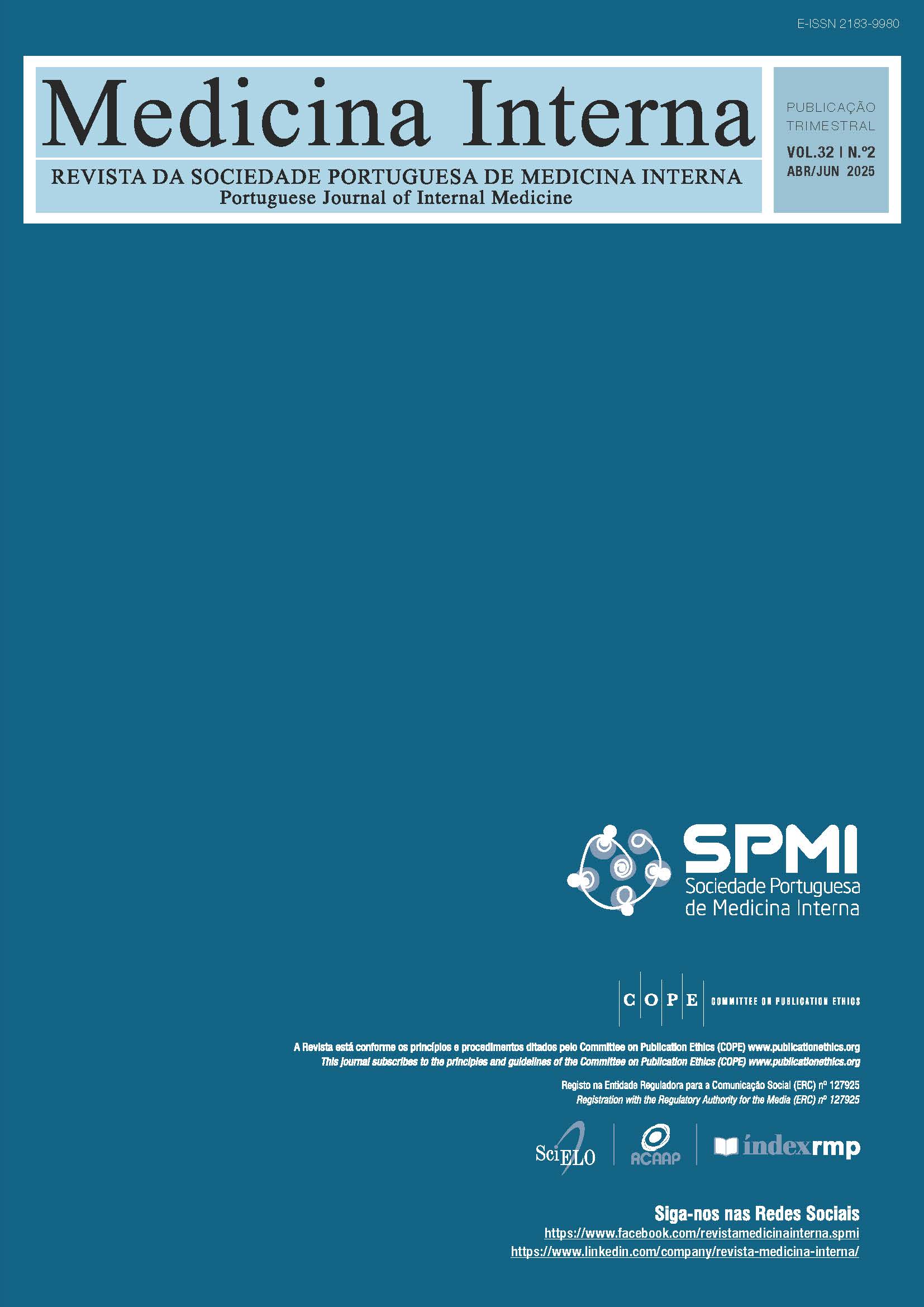Risk Assessment of Type 2 Diabetes in Healthcare Professionals at a Tertiary Hospital
DOI:
https://doi.org/10.24950/rspmi.2630Palavras-chave:
Diabetes Mellitus, Type 2/prevention & control, Exercise, Health PersonnelResumo
Introduction: Type 2 diabetes (T2D) is a multifactorial disease influenced by sedentary behaviors and erratic eating habits. Simple, practical, and non-invasive surveys can help identify individuals at increased risk of developing T2D.
Methods: This cross-sectional observational study applied the Finnish Diabetes Risk Score (FINDRISC) and the International Physical Activity Questionnaire (IPAQ) to healthcare professionals at a tertiary hospital. The variables studied were those included in FINDRISC and IPAQ. Personal history of diabetes was an exclusion criterion. Data were analyzed using IBM SPSS Statistics, version 27.
Results: Twenty-two respondents with diabetes were excluded. Of the remaining 279 individuals, 68.4% were under 45 years of age, and 2.6% were 65 years or older; 51.6% were physicians, 12.3% nurses, 8.2% healthcare assistants or senior technicians, and 6.1% diagnostic and therapeutic technicians. The mean body mass index (BMI) was 23.8 ± 3.7 kg/m². About half had a family history of T2D. The median FINDRISC score was 5 (minimum 0, maximum 22). Around two-thirds of the healthcare professionals were at low risk, with only 4.5% at high risk and 0.4% at very high risk; physicians appeared to have the lowest risk among the professional groups.
Conclusion: The prevalence of T2D was similar to the estimated rate for the Portuguese population. Most respondents had a normal BMI, regular physical activity, and a diet rich in fruits and vegetables, which may explain their low risk of developing T2D. The FINDRISC questionnaire could be valuable in screening, especially when the risk of T2D is elevated.
Downloads
Referências
Sociedade Portuguesa de Diabetologia. (Diabetes: Factos e Numeros - O Ano de 2019, 2020 e 2021 - Relatorio Anual do Observatorio Nacional da Diabetes - Edicao de 2023. Lisboa: Sociedade Portuguesa de Diabetologia; 2023.
Yildiz T, Zuhur S, Shafi Zuhur S. Diabetes Risk Assessment and Awareness in a University Academics and Employees. Sisli Etfal Hastan Tip Bul. 2021;55:524-31. doi: 10.14744/SEMB.2021.84770.
Pereira AM. Avaliacao da Atividade Fisica dos Medicos em Portugal. [Tese de Mestrado Integrado em Medicina]. Coimbra: Faculdade de Medicina da Universidade de Coimbra; 2018.
Dantas R, Azevedo T, Alvesa M, Balsa M, Albuquerque I, Ferreira M, et al. Utilizacao do FINDRISC no rastreio da diabetes em utentes assintomaticos. Rev Port Endocrinol Diabetes Metab. 2017; 12:45-51. doi: 10.1016/j.rpedm.2015.10.028.
Martin E, Ruf E, Landgraf R, Hauner H, Weinauer F, Martin S. FINDRISK questionnaire combined with HbA1c testing as a potential screening strategy for undiagnosed diabetes in a healthy population. Horm Metab Res. 2011;43:782-7. doi: 10.1055/s-0031-1286333.
Direcao-Geral da Saude. Programa Nacional para a Diabetes: Desafios e Estrategias 2023. Lisboa: DGS; 2023.
Lee PH, Macfarlane DJ, Lam TH, Stewart SM. Validity of the International Physical Activity Questionnaire Short Form (IPAQ-SF): a systematic review. Int J Behav Nutr Phys Act. 2011;8:115. doi: 10.1186/1479-5868-8-115.
Cleland C, Ferguson S, Ellis G, Hunter RF. Validity of the International Physical Activity Questionnaire (IPAQ) for assessing moderate-to-vigorous physical activity and sedentary behaviour of older adults in the United Kingdom. BMC Med Res Methodol. 2018;18:176. doi: 10.1186/s12874-018-0642-3.
Campanico HM. Validade Simultanea do Questionario Internacional de Atividade Fisica atraves da Medicao Objetiva da Atividade Fisica por Actigrafia Proporcional. [Tese de Mestrado em Exercicio e Saude]. Lisboa: Faculdade de Motricidade Humana da Universidade de Lisboa; 2016.
World Health Organization. WHO guidelines on physical activity and sedentary behaviour. Geneva: WHO; 2020. [accessed Dez 2023] https://apps.who.int/iris/handle/10665/336657
Downloads
Publicado
Como Citar
Edição
Secção
Categorias
Licença
Direitos de Autor (c) 2025 Medicina Interna

Este trabalho encontra-se publicado com a Licença Internacional Creative Commons Atribuição 4.0.
Direitos de Autor (c) 2023 Medicina Interna
Acesso livre










